Saturday, January 31, 2004
Silvered Æ antoninianus, Salonina, Rome, Göbl 229b
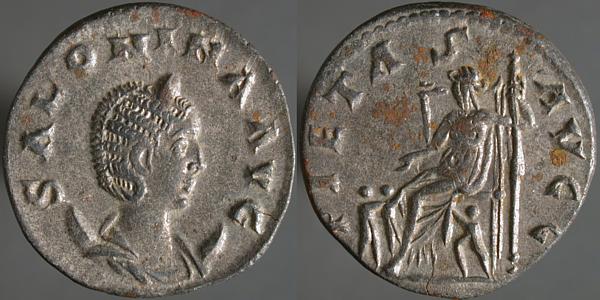
SALONINA AVG, Diademed draped bust right on crescent | PIETAS AVGG, Salonina seated left, holding scepter right, hand reaching toward two children left, another child beneath chair.
I know, I know, Greek coins are Art, Roman coins are just propaganda. Fine. Somebody in Rome had a pretty good handle on portraying fussy, demanding, kids though, huh?
Friday, January 30, 2004
Æ21, Alexandria Troas, Valerian, Sear SGI 4445var
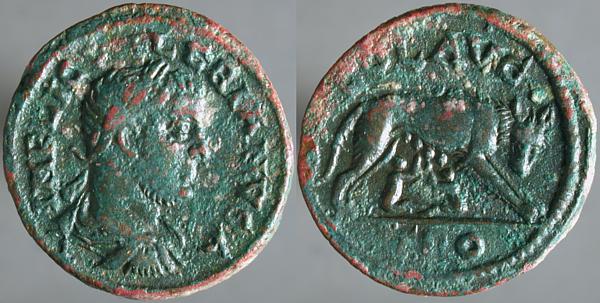
IMP LIC VALERIANVS A, Laureate draped cuirassed bust right | COL AVG TRO, She-wolf right, suckling twins.
The same scene as yesterday, this one from Alexandria Troas, which used a variety of reverses, not just horses. Still, there are more horses from there to be posted in the near future.
Thursday, January 29, 2004
Silvered Æ antoninianus, Gallienus, Antioch, Göbl 1628d
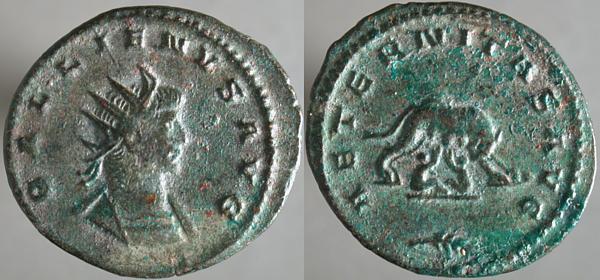
GALLIENVS AVG, Radiate cuirassed bust right | AETERNITAS AVG, She-wolf right, suckling twins. Branch in exergue.
A scene from the most lasting Roman foundation myth, that of Romulus and Remus.
Wednesday, January 28, 2004
Æ21, Alexandria Troas, 3rd-2nd C. BCE, SNG von Aulock 1457
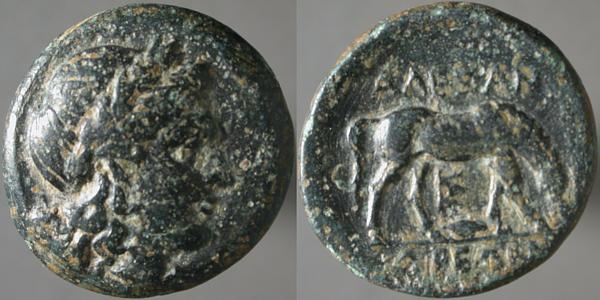
Laureate head of Apollo right | ΑΛΕΧΑΝ / ΔΡΕΩΝ, Horse grazing right, palm branch before, ΙΣ monogram over grain kernel beneath.
Not very precisely dated, but probably 250 to 350 years earlier than yesterday's coin of this city from Roman times, with a strikingly similar reverse design. Alexandria Troas and the area around it was horse country and, like other horse-rearing cities, they frequently portrayed the animals on their coins.
Update: fixed some misleading wording about the time between the issue between this coin and yesterday's.
Update July 29, 2004: Bellinger, in Troy the Coins, catalogs it as A28b, dates it to 281- 261 BCE, and makes the monogram ΚΣ
Tuesday, January 27, 2004
Grim & tasteless, huh?
Æ21, Alexandria Troas, Gallienus, SNG Cop 202var
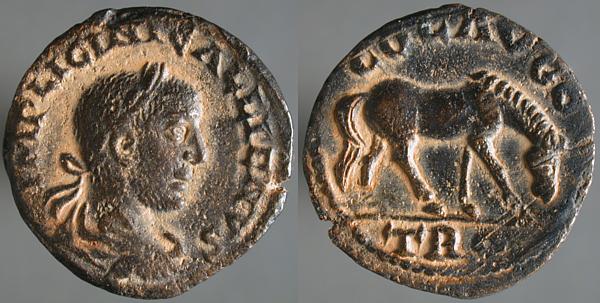
IMP LICINI GALLIENVS, Laureate draped bust right | COL AVGO TRO, Horse grazing right.
This from Alexandria Troas, which had colony status, which was frequently extended to cities central to regions where former Roman soldiers had settled on state-provided land. They served as a reserve force, and were able to provide at least rudimentary military training to local farmers.
As was common, coins of the colony bore Latin inscriptions rather than the Greek used on most other provincial issues.
The grazing horse was a design long used by Alexandria Troas, as I'll demonstrate tomorrow.
Monday, January 26, 2004
Billon antoninianus, Marinianae, Rome, Göbl 214b
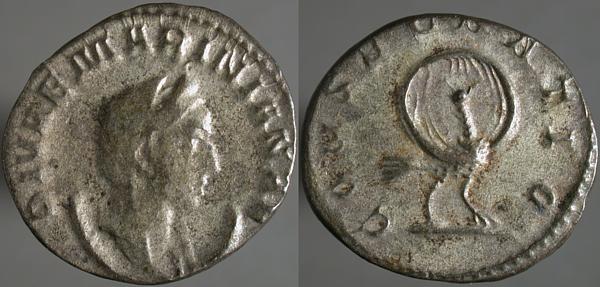
DIVAE MARINIANAE, Veiled diademed draped bust right on crescent | CONSECRATIO, Peacock standing right, tail folded, wings open to form a circle.
Perception's a strange thing. In the time I've had this coin, I always saw the peacock as a rather poorly executed image of a bird with the tail in splendor. It was only last week, looking closely at another example, that I saw what is, in fact, obvious here: the tail is folded, and held straight out behind. The wings are held up, forming a circle. It's not how we'd portray a peacock today, nor was it common then. I didn't expect to see it, and so I didn't.
Sunday, January 25, 2004
Æ26, Cyzikus in Mysia, mid-3rd C., BMC Mysia p45, 204
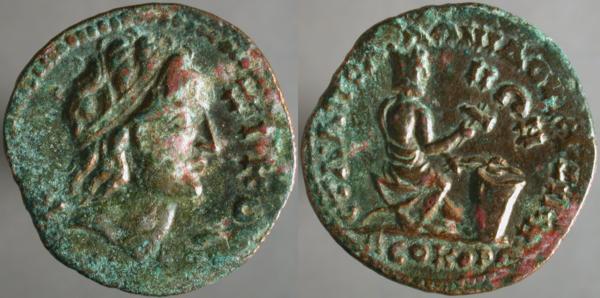
ΚV_ZΙΚΟC, Diademed head of Kyzikos right | CΤΑ·ΑΠΟΛΛΩΝΙΑΟV ΚVΖΙΚΗ / ΝΩΝ / ΝΕΟΚΟΝ, Hephaistos seated right, hammering object held in tongs.
Not the most commonly-seen god on a Roman coin, though a contemporary imperial issue shows Vulcan, his Roman equivalent, and this issue of Thessalonica, described in Lindgren and CNG Copenhagen as depicting Kabeiros, son of Hephaistos, perhaps shows the father instead.

